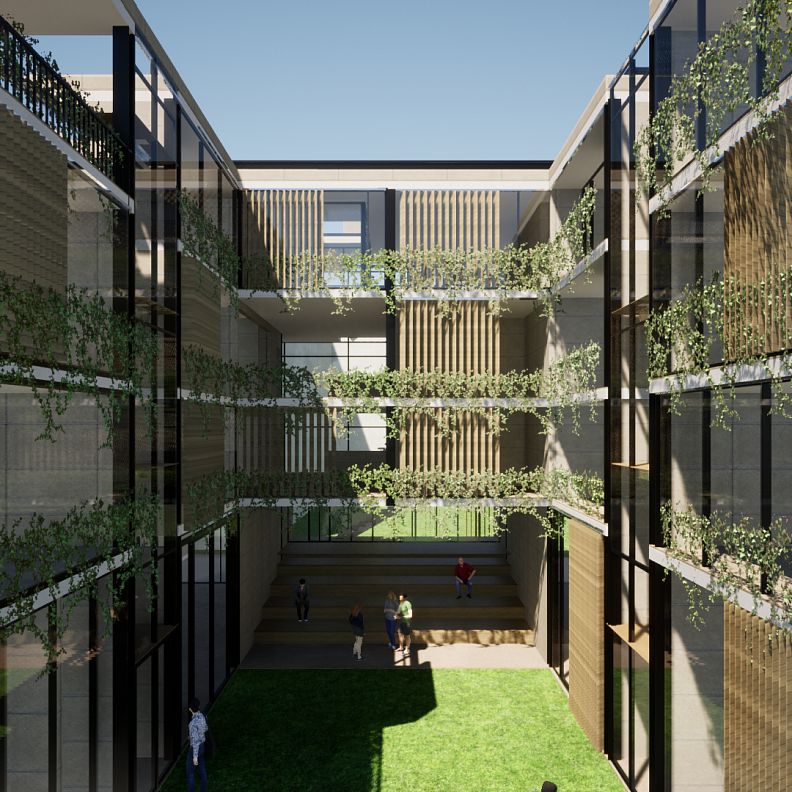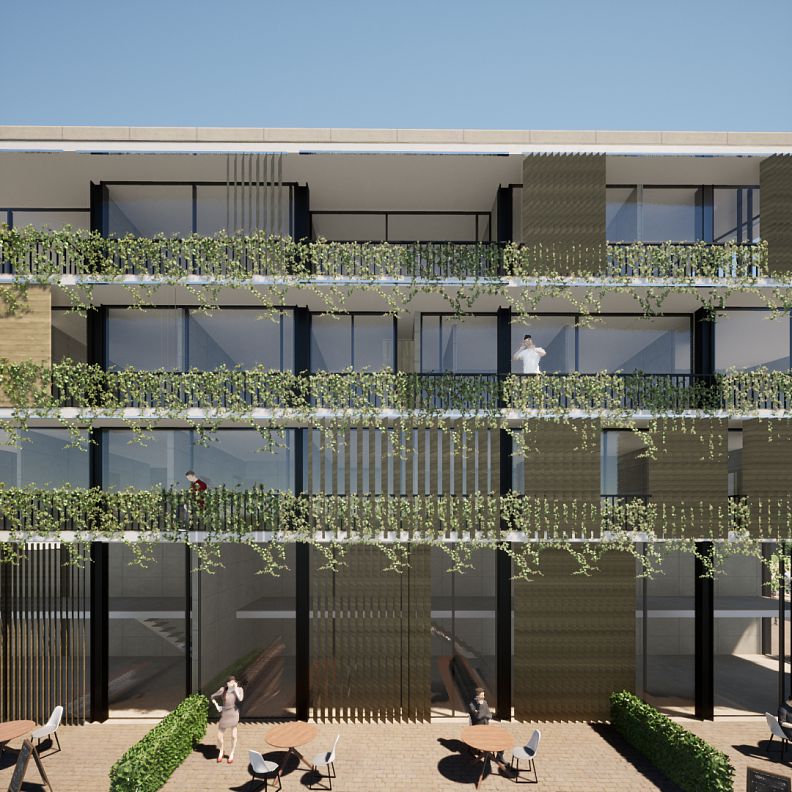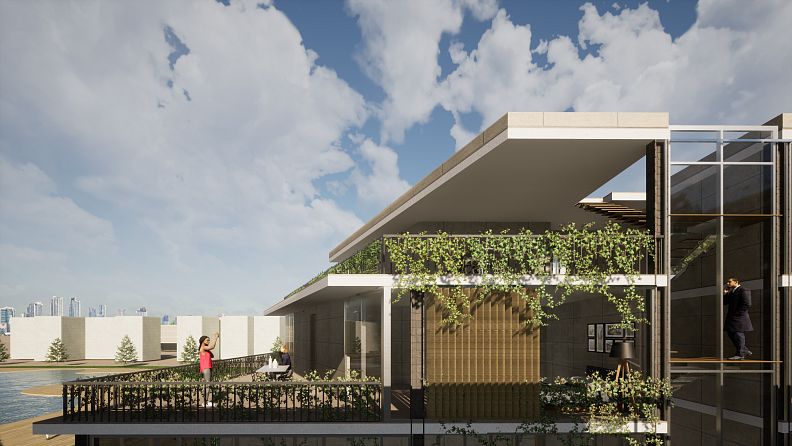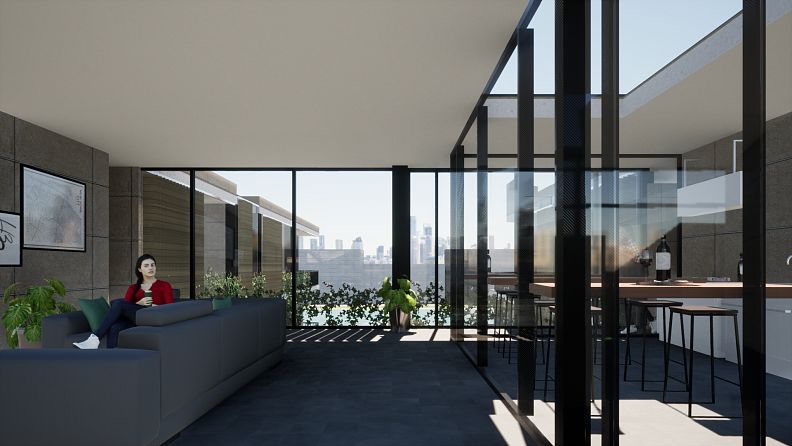Collective House

Project idea
The project is located in a university neighborhood and it is conditioned by the presence of a water body that defines the collective vocation of the place. The terrain is also defined by a pedestrian street that ends with the lake; which allowed proposing a commercial intention on the ground floor.
The program arises from the search for generating the most possible views for habitants and for the creation of collective spaces that connect with the city. The program includes two workshops for the community and commercial premises
In order to ensure strict adherence to the spirit of the project and to the optimal conditions of habitability of collective housing, existing regulatory headings, and architectural design recommendations from international specialists were respected.
Project description
The academic project explores the development of a new neighborhood within the Alameda Station research in the northern area of the Tecnológico de Monterrey, Toluca campus.
This new neighborhood aims to propose ideas about life in the city of Toluca in the 21st century, using concepts of density, mixed uses, and collective space, where living refers to all those activities that human beings do in the domestic environment and their relationship with the public sphere.
Collective house is aimed to be used as residences for students and staff of ITESM, but it is also planned for families and young workers. It has an own floor for students that includes terraces, workspaces and a community kitchen, this with the concern of generating a pure community environment. It also has a permeable commercial and public ground floor that includes workshops and two courtyards and finally, as a whole community space, the roof plan includes an urban orchard and a terrace for users.
The project responds technically and also generate an experimental search on housing typologies, alternative uses for the contemporary city and promote an urban system that regenerates the natural environment, rethinking the way we use natural resources, use water and energy, we move, work, consume and generate waste.
Technical information
As the whole ground floor is opened to the public, Collective house has its own differentiated access for users, so that the courtyards can be used by the people of the workshops and the commercial spaces.
The staircase that looks to the main courtyard is measured to be a host place for events of the community and to be a viewpoint of the lake that is across the street.














